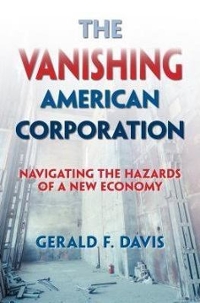Question
1) An economist looked at the past pricing data of a particular route and figured out that when the price was $20, there were 400
1) An economist looked at the past pricing data of a particular route and figured out that when the price was $20, there were 400 customers, and when the price was $24, there were 360 customers. Then, A. The demand elasticity at $20 is -0.5. B. The revenue maximizing price is higher than $20. C. Uber should increase the price from $20. D. The data scientist should investigate the reason for price fluctuations.
2) Suppose an industry consists of one firm with superior technology and infinitely many identical potential entrants. Which statement is correct about the long-run competitive equilibrium? (When the demand curve shifts, always compare the long-run equilibrium with the original demand curve and the long-run equilibrium with the new demand curve. Also, assume that the demand is always sufficiently high to support more than two firms in the market.) A. The production level of the firm with superior technology stays the same even if the demand curve shifts upwards. B. The profit of the firm with superior technology increases if the demand curve shifts upwards. C. The profit of a potential entrant with identical technology increases if the demand curve shifts upwards. D. The equilibrium price increases when the demand curve shifts up.
3) Consider a firm facing a downward-sloping demand curve. Its production cost consists of a fixed cost and a constant marginal cost. Suppose the firm's optimal pricing strategy results in the marginal revenue that is below the average cost. Then, A. The current profit is negative. B. The current profit is zero. C. The current profit is positive. D. We cannot tell from the information that we have.
4) Which statement is correct about iterated elimination of strictly dominated strategies (in a simultaneous move game? A. It may not eliminate any action. B. It never eliminates the action that is a best response against some action profile of others. C. At each iteration stage, we must delete all the strictly dominated actions; otherwise, we may reach a different conclusion. D. All action profiles that remain after the iteration are Nashequilibrium.
6) Consider a sealed-bid procurement auction with bid increments of $0.01m. The winner gets paid their own bids and hence their payoff is their own bid minus the production cost. The loser receives zero payoff. There are four participants, A, B, C, and D. Their production costs are $2m, $2.2m, $1.8m, and $1.7m, respectively. Which statement is correct about the Nash equilibrium of this auction? A. The winning bid cannot exceed $1.82m. B. Dream Path wins the auction. C. Both A and B are correct. D. Neither A nor B is correct.
7) Suppose many participants share a risky project, and all participants are risk averse. Which of the following statements is true? By "recover the expected monetary value", we mean that the sum of the certainty equivalent of the share of each participant equals the expected monetary value of the risk project.)
A. It is always possible to recover the expected monetary value. B. Recovery of the expected monetary value is possible only if the current project risk is not positively correlated with the rest of the risk that each participant faces. C. Recovery of the expected monetary value is possible only if all the participants have the same utility function. D. Recovery of the expected monetary value is possible only if at least one of the participants is risk neutral.
8)A risk-averse decision maker is choosing among the following four lotteries. Which one will never be chosen based on the information that the decision-maker is risk averse? A. $20 with 50% probability and $190 with 50% probability. B. $90 with 80% probability, $130 with 10% probability and $150 with 10% probability. C. $100 with certainty. D. $105 with 40% probability, $100 with 50% probability and $85 with 10%probability.
Step by Step Solution
There are 3 Steps involved in it
Step: 1

Get Instant Access to Expert-Tailored Solutions
See step-by-step solutions with expert insights and AI powered tools for academic success
Step: 2

Step: 3

Ace Your Homework with AI
Get the answers you need in no time with our AI-driven, step-by-step assistance
Get Started


